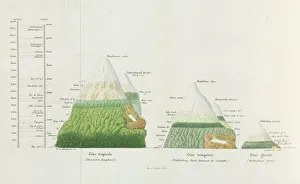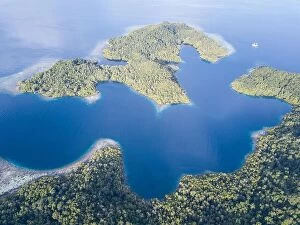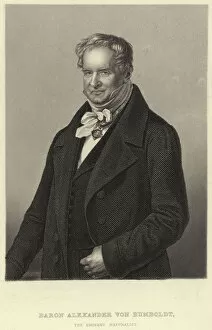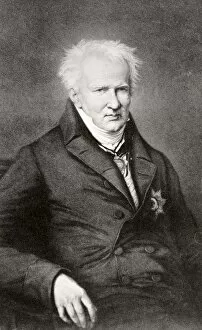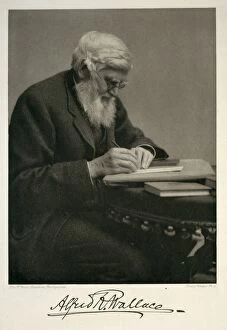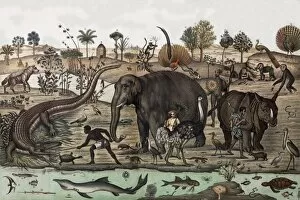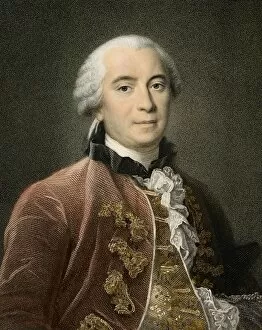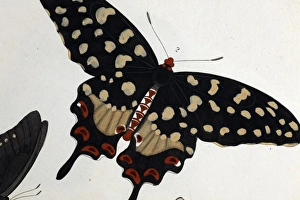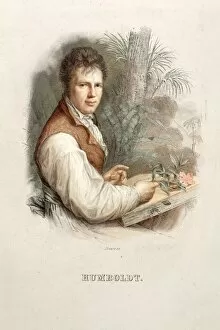Biogeography Collection
Biogeography, the study of the distribution of plants and animals across different geographical regions, has been a subject of fascination for centuries
All Professionally Made to Order for Quick Shipping
Biogeography, the study of the distribution of plants and animals across different geographical regions, has been a subject of fascination for centuries. One notable figure in this field is Alexander von Humboldt, a Prussian geographer, naturalist, and explorer who lived from 1769 to 1859. Humboldt's contributions to they were groundbreaking. Through his extensive travels and observations, he discovered that plant distributions varied at various altitudes. This finding revolutionized our understanding of how environmental factors shape biodiversity. Engravings and portraits capture the essence of Humboldt's work. In one engraving by C. Cook, we see him depicted with an aura of wisdom and curiosity on his face. Another engraving showcases Friedrich Wilhelm Heinrich Alexander von Humboldt as a distinguished scholar who dedicated his life to unraveling nature's mysteries. An oil painting from 1809 portrays Humboldt in his prime years as he delved into scientific exploration. The chromolitho image further immortalizes him as a pioneer in biogeography. Humboldt was not alone in shaping this field; Alfred Russel Wallace also made significant contributions as a British naturalist. His presence reminds us that biogeography is an international endeavor driven by passionate individuals seeking knowledge about our planet's rich tapestry of life. The temperate animal panorama from the 18th century serves as a visual representation of the diverse species inhabiting different climatic zones around the world—a testament to the intricate relationship between geography and biology. In summary, biogeography encompasses much more than just plant distributions at varying altitudes—it represents humanity's quest for understanding Earth's living organisms within their ecological contexts. Figures like Alexander von Humboldt and Alfred Russel Wallace have paved the way for future generations to explore this fascinating discipline further.

